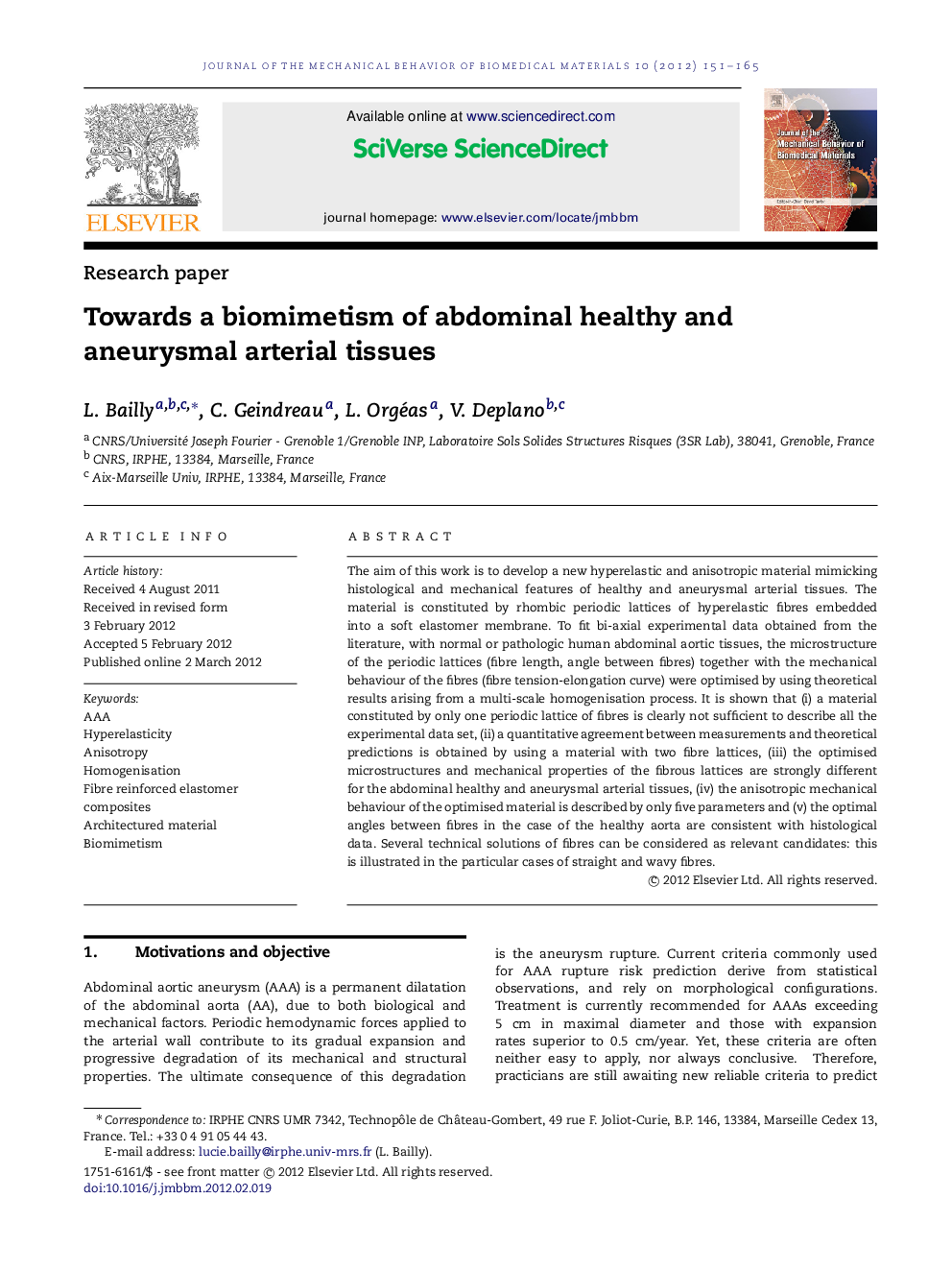| Article ID | Journal | Published Year | Pages | File Type |
|---|---|---|---|---|
| 811055 | Journal of the Mechanical Behavior of Biomedical Materials | 2012 | 15 Pages |
The aim of this work is to develop a new hyperelastic and anisotropic material mimicking histological and mechanical features of healthy and aneurysmal arterial tissues. The material is constituted by rhombic periodic lattices of hyperelastic fibres embedded into a soft elastomer membrane. To fit bi-axial experimental data obtained from the literature, with normal or pathologic human abdominal aortic tissues, the microstructure of the periodic lattices (fibre length, angle between fibres) together with the mechanical behaviour of the fibres (fibre tension-elongation curve) were optimised by using theoretical results arising from a multi-scale homogenisation process. It is shown that (i) a material constituted by only one periodic lattice of fibres is clearly not sufficient to describe all the experimental data set, (ii) a quantitative agreement between measurements and theoretical predictions is obtained by using a material with two fibre lattices, (iii) the optimised microstructures and mechanical properties of the fibrous lattices are strongly different for the abdominal healthy and aneurysmal arterial tissues, (iv) the anisotropic mechanical behaviour of the optimised material is described by only five parameters and (v) the optimal angles between fibres in the case of the healthy aorta are consistent with histological data. Several technical solutions of fibres can be considered as relevant candidates: this is illustrated in the particular cases of straight and wavy fibres.
